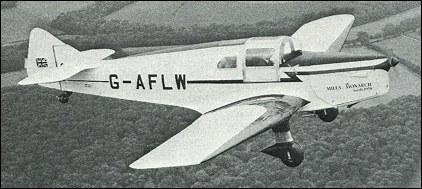 |
Miles M.17 Monarch1938 |  |
| TRAINER | Virtual Aircraft Museum / United Kingdom / Miles |
 |
In the mid-1930s wealthy aviation enthusiast Whitney Straight approached F. G. Miles to design a new lightplane for flying club use, the result being the Miles M.11 Whitney Straight two-seat cabin monoplane of low-wing configuration. The prototype (G-AECT) was flown for the first time on 14 May 1936, and its all-round good qualities resulted in the production of 50 M.11A, M.11B and M.11C aircraft over the next two years. A number of these were used for experimental purposes, including the testing of various engines and, on the prototype, of auxiliary aerofoil flaps, the data gained proving beneficial to later Miles aircraft. No new M.11 aircraft were supplied for military use, but a number were impressed for service as communications aircraft during World War II, their number including 23 for the RAF (21 in the UK and two in India), and three for the Royal New Zealand Air Force. An improved model of the M.11 was developed with three-seat accommodation and flown as the M.17 Monarch on 21 February 1938. Although this proved satisfactory, the company's involvement with Master and Magister production meant that it was possible to complete only 11 before the outbreak of World War II, five of these being impressed into RAF service.
|  COMPANY PROFILE | ||||||
 |

|
